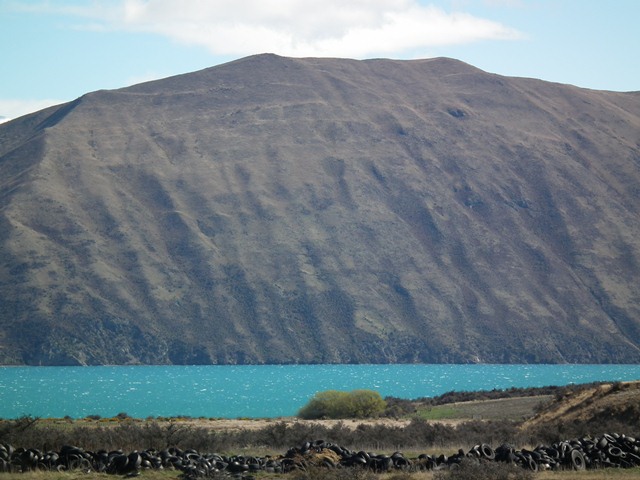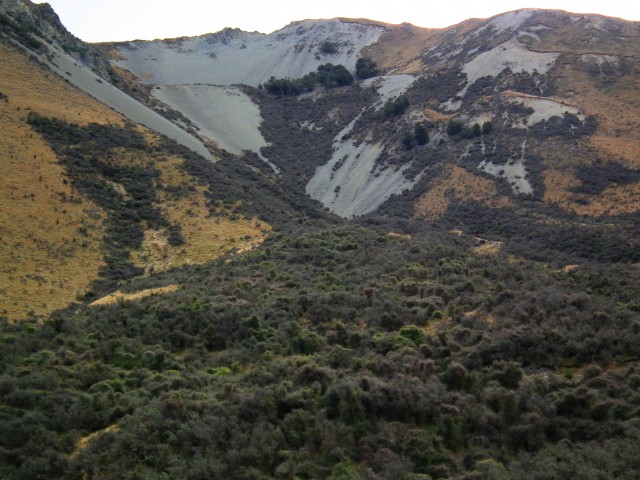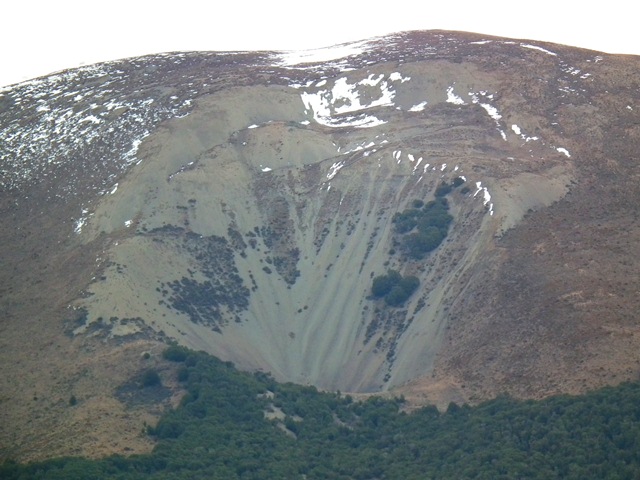22 September 2012
Examples of ongoing slope deformation in New Zealand
Posted by Dave Petley
One of the greatest challenges facing those managing slope hazards is knowing how to deal with slopes that are, or have been, actively deforming without failing to date. Many slopes show prolonged periods of active deformation – creep type movements – without ever failing, whilst others undergo periods of rapid movement before self-stabilising. Being able to separate out those that are likely to collapse from those that will not is very important, and very difficult. The following three images from my field work in New Zealand this week illustrate the problem. First, this slope shows many signs of prolonged creep-type deformation:
Note the multiple sub-parallel ridges running across the slope near to the crest. These are typical of actively deforming large rockslopes, indicating zones of tension as the slope moves. Almost all large, old rock slopes have these features. Often they are much more pronounced than this. In most cases they do not indicate an imminent problem.
This is the Coleridge rock avalanche on the eastern side of the Southern Alps, across the Canterbury Plain from Christchurch. There are two main failure events here – the scar is clearly visible as the scoop that have been taken out of the hillside. The debris extends a couple of kilometres or so from the source area, and can be seen as the densely vegetated mass below the scar (i.e. in the foreground):
But look carefully into the scar area and you’ll see that there is a large block of material that has displaced from the crest of the landslide, and then stalled without collapsing. This is the block with trees growing on it in the upper centre of the scar. This block appears to have moved some tens of metres before ceasing its movement. In fact this sort of feature is very common in large rock avalanches in New Zealand. It is not clear to me as to how and why they form in this way.
Finally, many slopes show much more active deformation without collapse (although in this case the hazard is often rather more elevated). This is a large landslide between Porters Pass and Arthurs Pass:
In this case a large mass has already failed, leaving behind multiple deformed blocks on the hillside. It is hard to know without more detailed investigation just how much movement is occurring at this site, or how likely it is that the staled masses will fail. I would certainly not want to be near that slope in a large earthquake though!





 Dave Petley is the Vice-Chancellor of the University of Hull in the United Kingdom. His blog provides commentary and analysis of landslide events occurring worldwide, including the landslides themselves, latest research, and conferences and meetings.
Dave Petley is the Vice-Chancellor of the University of Hull in the United Kingdom. His blog provides commentary and analysis of landslide events occurring worldwide, including the landslides themselves, latest research, and conferences and meetings.